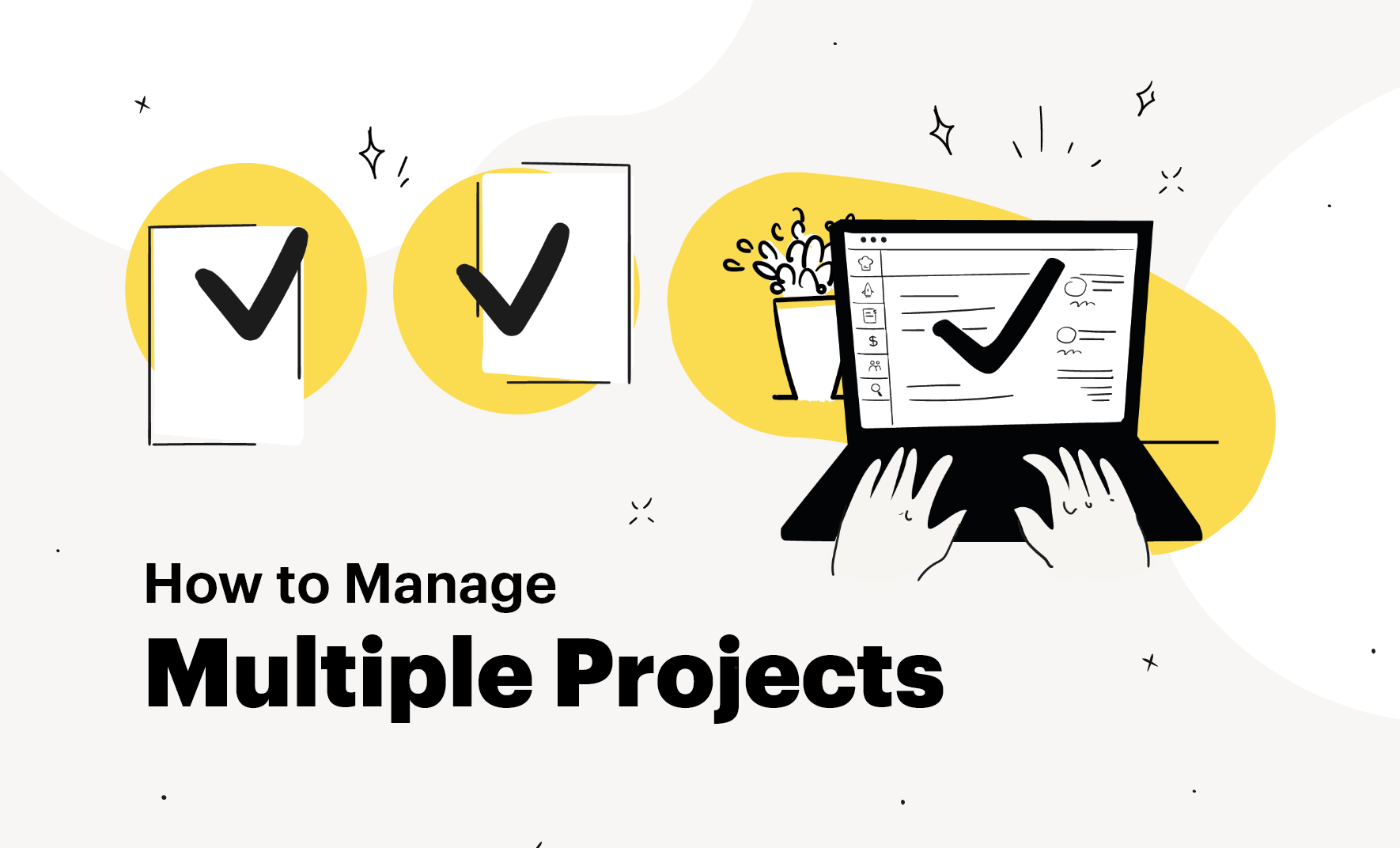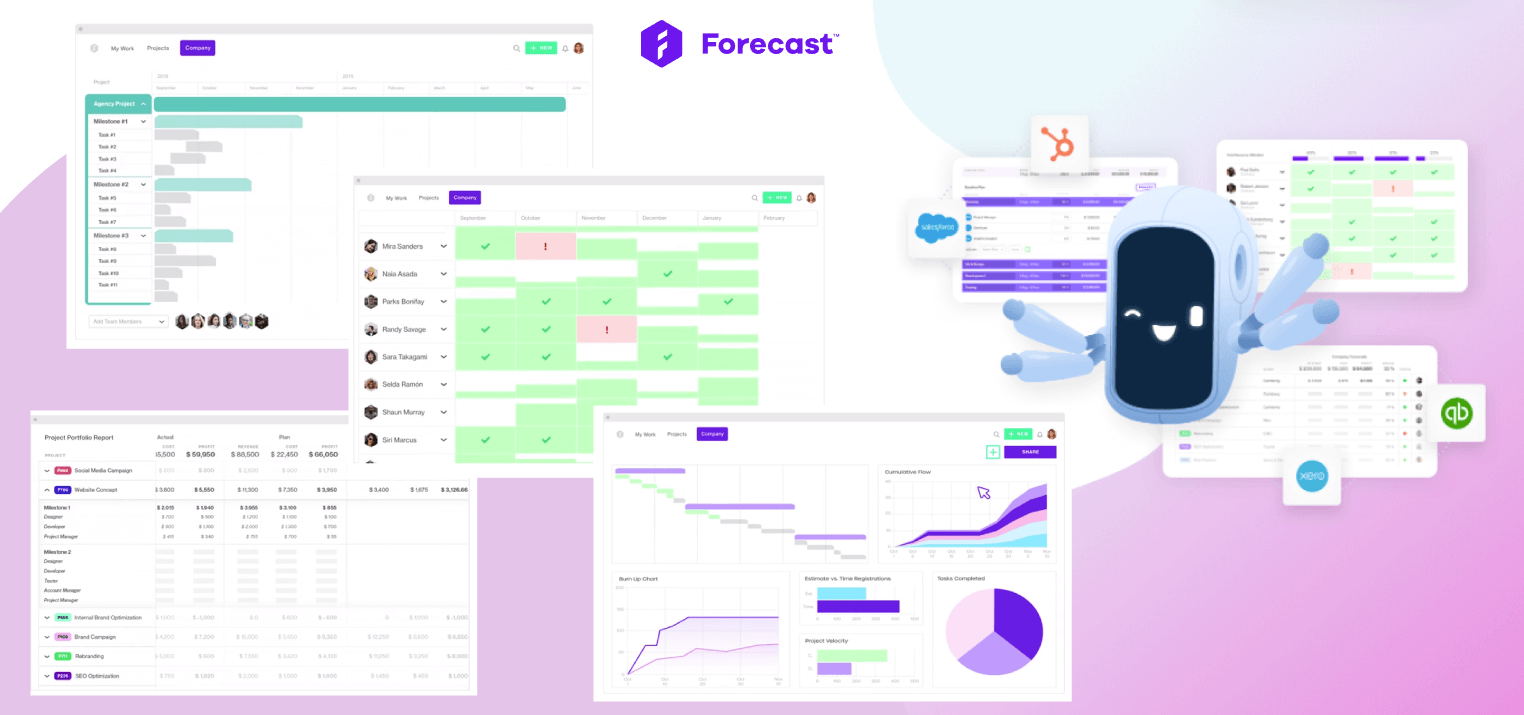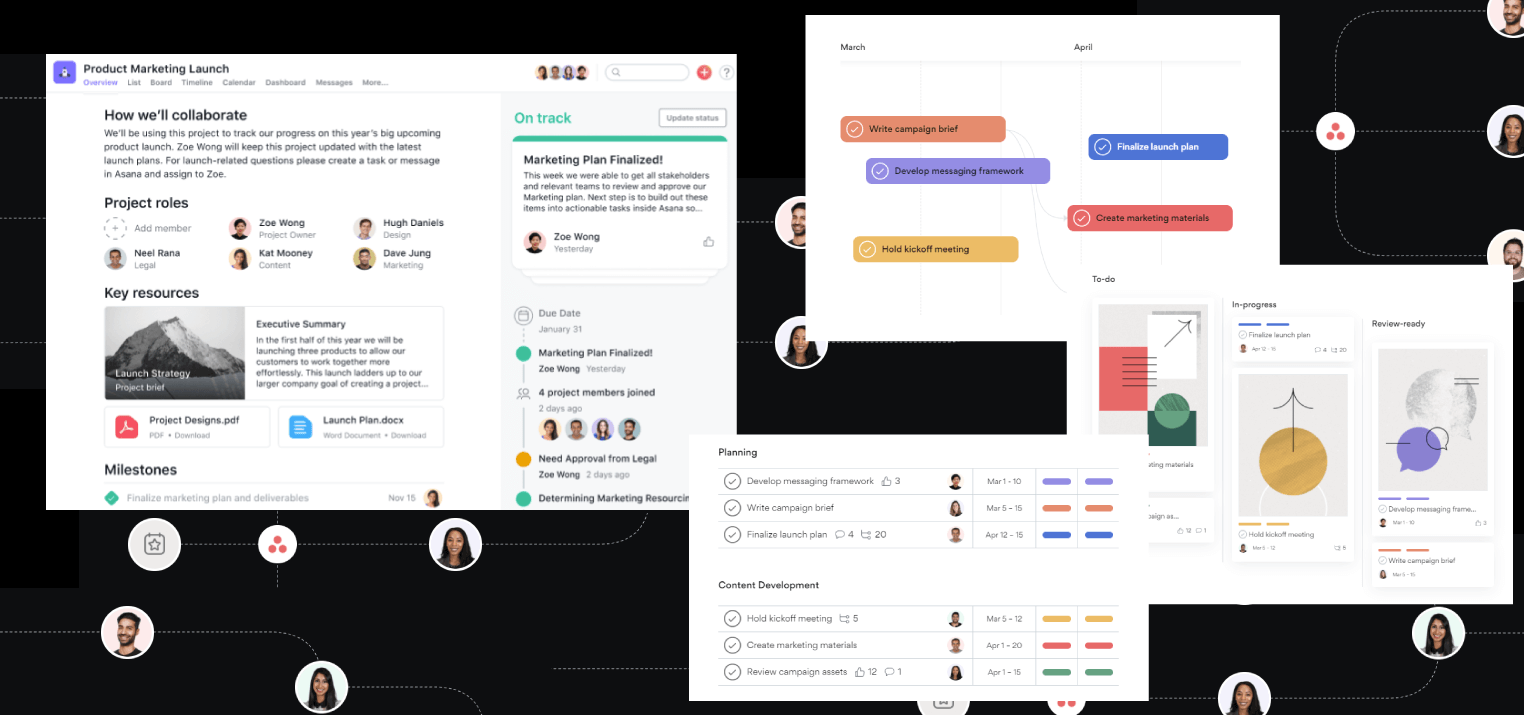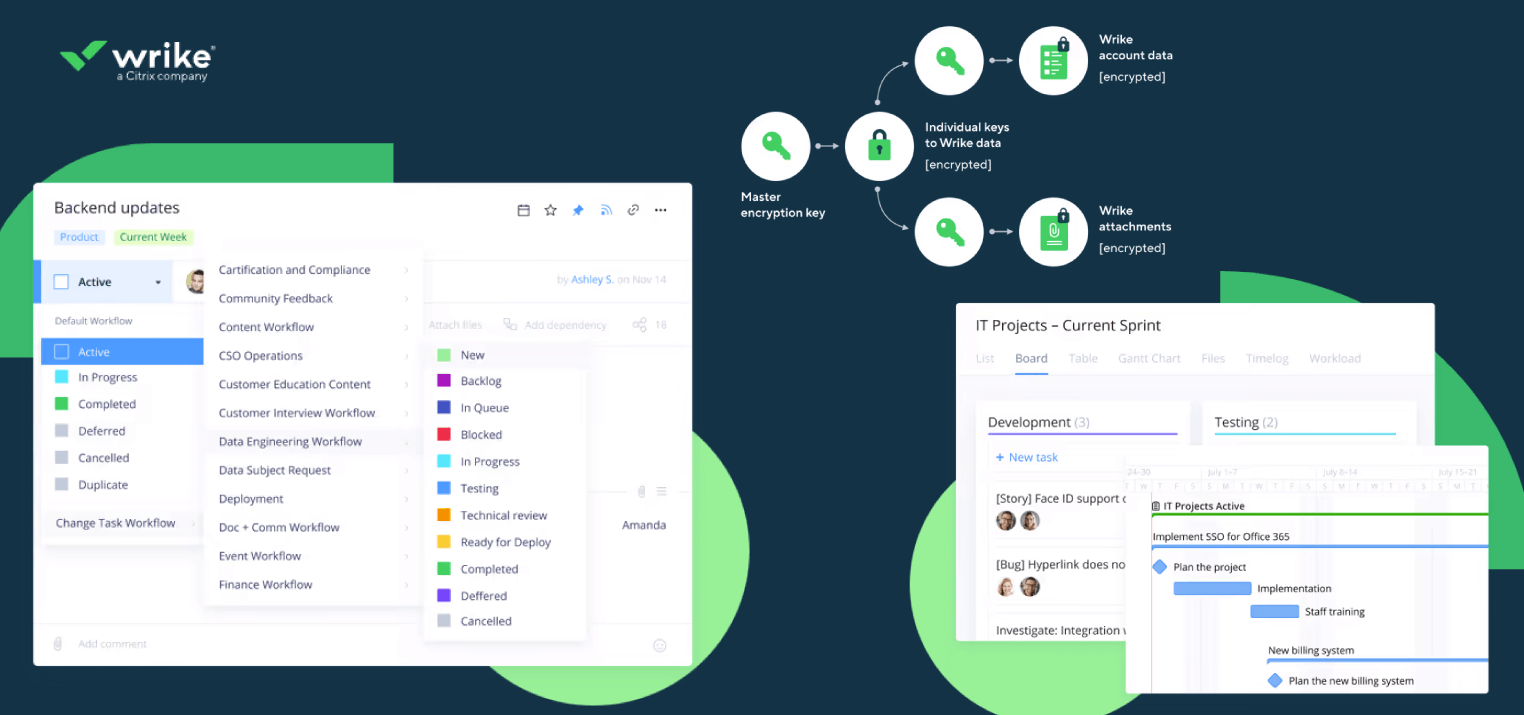23 Clever Tips on How to Manage Multiple Projects

If you are reading this article, the chances are that at some point in your career you had to manage a project and make sure the business and client’s needs were met. For a non-professional and inexperienced project manager managing various tasks, working with tight deadlines, and leading a team can be scary. Now, imagine you have to manage multiple projects at the same time. Like with everything else, if you have the right tools to help you through the process and if you break down the work into small, chewable steps, you are on your way to successfully completing many projects, no matter the number. This is why, in this article, we will look at all the small, baby steps you can take to run multiple projects with ease. We will also look at some things to avoid and tools that can help you through the process.
Nobody was born with the tag “Project Manager of Multiple Projects”. As with learning how to manage a single project, you get better with time, by testing, experimenting, and learning to adapt.
With some useful tips and the needed experience, anyone can manage multiple projects and achieve satisfying results.
How to Manage Multiple Projects?
Let’s have a look at the most crucial steps and skill you will acquire with time.
1. Prioritize tasks by importance
It’s a no-brainer that the project’s main building block is a single task. All the project activities are organized into tasks that need to be completed in order to finalize a project.
As important as tasks are, you can easily get lost in the abundance of things to be done. That’s why you need to categorize the tasks. That’s right, all tasks need to fall in a specific category if you want to stay organized and keep sane.
They are 4 main categories, in which you can distribute the tasks at hand:
- Category 1: Important and Urgent
The tasks you should do first.
Example: Gather the team for a kick-off meeting for a new project. You can’t start a new project before you brief the team and divided the work
- Category 2: Important but Not Urgent
The tasks you can schedule for later but should try to do them soon.
Example: Writing a risk management report. You can’t run the project without it, but you have some days/hours before you need it done.
- Category 3: Urgent But Not Important
These are the tasks you can delegate to someone from the project team, who has the capacity and knowledge.
Example: Communicate with the client some secondary details, answer some questions or reassure them you are making progress on the project; this is not important, so to speak, because someone from your team can be assigned to this task. You can introduce a project coordinator and delegate some of your responsibilities.
- Category 4: Not Urgent and Not Important
Evaluate if you need to do this task at all; if you figure out you need to do it, move it to category 2.
Example: Writing a guest post for a blog, to gain exposure and show expertise. Depending on your workload, you can find this time to spread the word about your business. At the same time, you should think, who will be the readers of this post? Are they your target audience? Shouldn’t you focus your efforts on your company’s blog first? Is there anyone on your team, who, under your supervision, can get the blog started?
Usually in Not Urgent and Not Important, your main goal is to evaluate who at all will benefit from doing this task. If not “enough” people are benefiting, you can stop doing it.
2. Know when to delegate tasks and responsibilities when managing multiple projects
Of course, there are tasks and responsibilities that can’t be delegated, but there are things that your team members can do equally well. The ability to delegate has one other advantage – the more you trust your team to do things, the more experienced they will become and you will help nurture and develop your team’s skills.
In the beginning, you might spend a bit more time mentoring your team members to do a task, but once they get experienced, your hands will be (almost) free to focus on other of your many responsibilities.
Not in the last place, people are happy to learn new things and to be trusted with new tasks.
3. Have regular check-ins with team members
The working environment is without exceptions, dynamic. With multiple projects, the atmosphere in the team can change really fast. The team members will have questions, will need resources, will need more information in order to do their job properly.
That’s why it’s important to have regular check-ins with your team, they can be quick, but surely will provide you with useful insights on the projects’ progress and will help you plan ahead.
4. Plan ahead and before you start a project
Planning ahead is important after collecting feedback at regular check-ins, but it’s also equally if not even more at the beginning of a project.
If you manage several projects at the same time, it’s crucial to make elaborate plans before your start. That way you will minimize the uncertainties and the projects will run more smoothly.
5. Review and adjust your plan through the life of the projects
After the check-ins with your team, you will realize that some of the tasks and activities need revision. That’s normal! Don’t panic, just have a block of time to sit in quiet and review and revise your plans. Not many projects go according to the plan, so with time you will get used to the idea to plan the best you can in the beginning, but keep revisiting your plans later.
6. Avoid micromanagement
As a project manager, one of your most important responsibilities is to have a good understanding of the overall picture. Try and avoid going into every little detail of the project, because you will get exhausted really fast. Instead, try to build teams, where people are well qualified to do tasks on their own. It’s better to invest in training, mentoring, instead of going and doing everything yourself. It’s just not doable for multiple projects, also in the long run.
7. Stay focused and block your time to increase productivity
As we briefly mentioned a few lines above, it’s important for you to stay focused. If you want to increase your productivity you will need to keep certain hours of the day for planning and organizing.
It’s true that some people can stay focused even if 10 people interrupt the current activity they are occupied with. But our best guess is, that you are relatively new to project management and you will need to divide your tasks and focus on one thing at a time.
Of course, there are urgent things that will require your attention, but decide what is urgent and what can wait.
8. Be organized, have an overview of the projects, and save workflows
With time, you will start to create different workflows for different types of projects. This doesn’t mean that each time you need to invent new workflows. When you have the time, sit, think and evaluate which workflows could be repetitive and useful for future projects.
Familiarize your team with the workflows – that will save time explaining what is happening when, when you start a project next time.
Another thing that can help you in managing multiple projects is to create templates, which can be easily reused by your team members.
Not in the last place, request work briefs from clients and team members before you start any planning. This way, you are creating good practices, which can be used over and over, and make life much easier!
9. Designate one place to keep all of your projects
Although you will be working on multiple projects at the same time, it’s good to have a designated place for projects, so that you can easily access them, make comparisons, see how they overlap, and so on.
You also need an option where your team members access the projects, so no one gets lost in spreadsheets, e-mails, attaching files, and eventually copying work and working on un-updated files.
10. Use software and tools to help you manage multiple projects
We don’t think that this step comes as a surprise for you – today, we can do just very little without technology.
The company you are working with might have specific software and tools that they are working with. You might need to learn how they work or to introduce the company to tools you are using and that can be useful for them too.
There are many tools on the market today that can help you quickly overview multiple projects, share information with clients, allocate resources from one project to another, so why not use them?
They do the work for you with simple drag and drop functions.
11. Communicate clearly with stakeholders, leadership, and team
Ok, we’ve looked at some tips on how to manage multiple projects within your company and team, but don’t forget communication is definitely the most important ingredient of your success.
You have to make sure that all parties understand their roles, task, and responsibilities, you need to inform them of changes and make sure everyone is comfortable with their workload.
If you are interested in learning more about the communication part of being a project manager, you can read about it in the article about good practices in project management, how to lead your team, and more.
Things To Avoid When Managing Multiple Projects
It’s good to know what can help you to manage multiple projects at the same time. However, knowing what can go wrong is equally important.
In this section, we will share some thoughts on things you should try to avoid when juggling several projects at the same time.
1. Not tracking dependencies
As we learned by now, tasks are the main building blocks of a project. There will be tasks that need to be finished before you start a new one, or tasks that need to finish at the same time. And these are only two of the possible many scenarios.
That’s why it’s important to track the dependencies between the tasks.
Luckily, software nowadays offers many options to do that, but we just mention it, so that you know how important it is and you keep it in mind.
You should be extra careful when allocating resources – this is one of the cases where things can be mixed up.
2. Over-allocating or over-committing resources
You will rarely meet companies that have enough resources. You will often need to allocate resources, but one of the things you should try and avoid is too many shifts in tasks between team members or relying on only one group of people to do a major piece of work.
According to the American Psychological Association, ” people get overbooked with work and there is no way to spot who’s doing what. In fact, as long as you manage multiple projects with the same resource pool, you are dooming everyone to heavy-duty multitasking, which takes a toll on productivity and is not a good thing whatsoever”
This is why it’s essential to have a tool to help you overview all of your projects and the tasks assignments to avoid overloading team members with work.
Another solution is to have several team members who are accustomed to switching from task to task and from project to project and to use them as a buffer when needed. With time, they will gain experience with the different types of tasks and projects, and will be easier for them to orientate in the tasks. Moving all team members hectically across tasks and projects will only cause confusion and decrease productivity.
3. Setting Unrealistic deadlines
This is one of the most popular mistakes in project management, and yet, it’s not so difficult to avoid.
Never set a deadline that is “just” enough to finish all tasks. Things go wrong all the time. Depending on the project and client, you can always predict how much extra time you can give yourself and your team – time to react if there are problems.
It’s better to give an estimate with 2-3 extra working days, instead of apologizing to the client that you didn’t meet the deadline, even worse – overload your team or face penalties for not delivering on time.
4. Not updating and re-baselining plans
We feel we already discussed this point, but with a positive note – always update your plans. Well, we just want to remind you that with multiple projects at hand, you will often need to update your plans throughout the life cycle of the project.

How to Manage Multiple Projects with Competing Deadlines?
Now that we’ve covered some do’s and don’t on managing multiple projects, we’d like to bring to your attention one more possible scenario. It sometimes happens that two or more projects are supposed to be finalized at the same time. So how do you manage the tasks, the resources?
Let’s have a look at some tips we have for you.
1. Write it all down
First and foremost – brainstorm. Write down all your projects and routine tasks with their impending deadlines either on a piece of paper or digitally. Use whatever tool you prefer and list all projects and tasks within the same deadline.
2. Summarize the estimated time of completion for each item
Record and summarize the amount of estimated time of completion for each item on your list. You need to do this step, so you can get an idea of the total time needed to complete a project and also, to see where exactly and when your projects overlap and compete.
3. Pinpoint the highest priorities
Keep your eyes on what’s most important. Once you’ve listed everything down, you need to evaluate if there are tasks that are not that important, tasks that are not urgent, and tasks, that can be allocated. With experience, you will notice that you can only do this much with tight deadlines.
If you have a good overview of all your projects, you will start to see the big picture and what is really needed to complete a project and you won’t lose yourself in unnecessary details.
4. Make a plan
This time you are not planning the individual activities for each project, but planning how to handle the projects with competing deadlines. Once you have the lists of tasks for both projects and how they overlap, you will be able to come up with a plan on how to distribute budget, resources, and time between them
5. Divide and Conquer
Break the big tasks down into smaller, more manageable parts. This technique will help you to be more flexible within the project phases and allocate resources if needed. You don’t need to put a whole team on hold just because they are dependent on other tasks to finish, you can “use” them for other parts of the project or another project. Yet, don’t overdo the multitasking and switching thing.
Dividing tasks into smaller pieces has one more advantage – after each completion of a task, you can make a quick check if everything is running as planned, you can make adjustments, and continue. That saves the trouble of completing one big chunk of the project/s, only to find out there are many miscommunicated and uncoordinated things in there.
6. Make effective delegation
We already mentioned how important delegation is, but you will find out that with multiple projects with competing deadlines is next to impossible not to delegate.
Just keep in mind to not overload the team members you are delegating tasks to. Try to focus on the delegated task and don’t switch them too often from task to task and from project to project.
7. Don’t overload yourself and your team
Learn to say no when managing multiple projects. Sometimes you will just need to say no. In the long run, an overworked and stressed team is not looking good. So you will need to find your happy medium between taking on new projects and challenges and keeping your team in good shape.
It happens that the client is not always realistic, as they might not be familiar with all the processes involved in the execution of a project. And this is where you come in to shine! You can sit, and take some minutes, to shed more light on the project and help the client familiarize himself/herself with the scope of the project. This way, you can negotiate more realistic conditions for the project.
8. Be flexible and relax
For better or for worse, change is inevitable and change is constant.
If you’ve gotten so far – congratulations! You are a tough nut to crack! What we want to say is that you are persistent and willing to learn to manage multiple projects. And this is half of the work done. Because anything can be learned.
Just remember to be flexible too. There will be ups and downs, misunderstandings, mistakes, changes – but with a little bit of a positive attitude, time to evaluate and reflect on, you will get better at project management. And eventually, you will like the changes and challenges too!
Great Software Tools for Managing Multiple Projects
Til last, we saved a small list of software that might help you run your projects more smoothly. Let’s check how to manage multiple projects with some great tools we picked for you:
1. Forecast app

Short description
Forecast uses Ai to make useful timesheet predictions, automatically estimates tasks, assigns and optimizes workload across resources, and sets a project delivery date. It allows you to reschedule the plan whenever change requests appear.
Also, Forecast automatically calculates your project budget using task estimates, rate cards, and internal hourly costs. As your team registers time the data is reflected in real-time reports.
You can read more in-depth about the tool on their website.
Pricing plan
- Lite – $29 per month per person/ min.10 persons / annual plan
- Pro – $49 per month per person/ min.10 persons / annual plan
- Enterprise – contact the company for a price quote
2. Asana

Short description
Asana should not be confused with full-on project management software, despite its new Timeline feature. It includes neither native time tracking nor other advanced tools we expect to see for full-scale project management. But for managing tasks and workflows, it’s a flexible and elegant tool that you can bend to your will. Asana is one of the best collaboration and productivity apps for teams on the market.
Pricing plan
- Basic – free
- Premium – $13.49 per person per month
- Business – $30.49 per person per month
- Enterprise – contact the company for a price quote
3. Trello

Short description
Trello is easy on the eye and simple to navigate. Although not perfect for built-in reporting and time tracking is a great tool for collaboration and managing workflows. It isn’t a great app for traditional project management and larger projects. Still, Trello’s selling points are its ease of use and ability to share Trello boards with outside collaborators. Very useful for the brainstorming stages of a project and pre-planning – when you need to easily move things around and adjust them.
Pricing
- Free
- Business-class – $12.50 per person per month
- Enterprise account – contact the company for a price quote, prices vary
4. Wrike

Short description
Wrike is a flexible collaboration app that also contains project management tools. It has a simple and intuitive design that encourages working with the tool.
Some of its main advantages are:
- Special account types for marketing/creative teams and professional services
- Can manage both projects and ongoing work
- features flagging projects at risk of slipping
While Wrike is on the expensive side, it’s easier to set up and start using than many other comparable project management apps.
Pricing
Contact the representatives to figure out a plan suitable for you.
Final words
With that, we conclude our article on how to manage multiple projects and we hope you found a little something useful for your career.
We hope that we were able to show you how exciting project management can be and how useful tips and modern tools can make management very enjoyable. In the meantime, you might be interested in some of the related articles on project management: